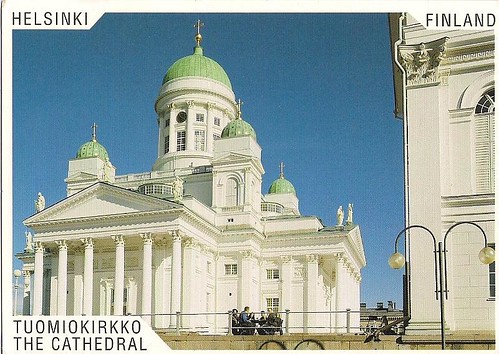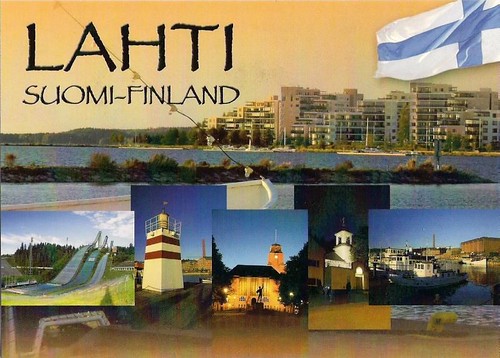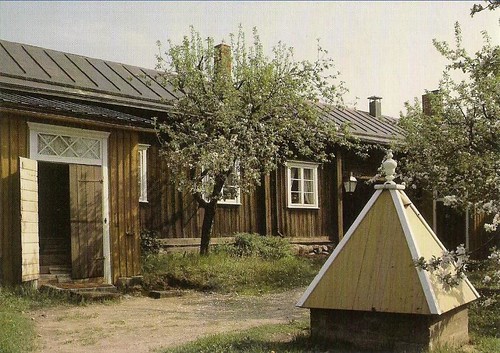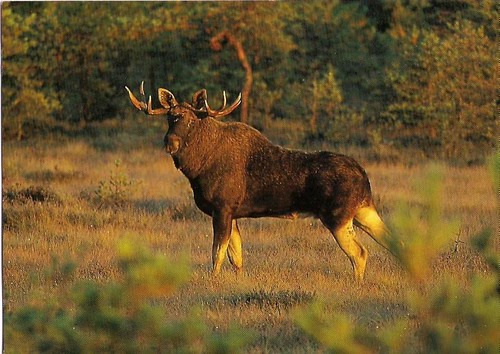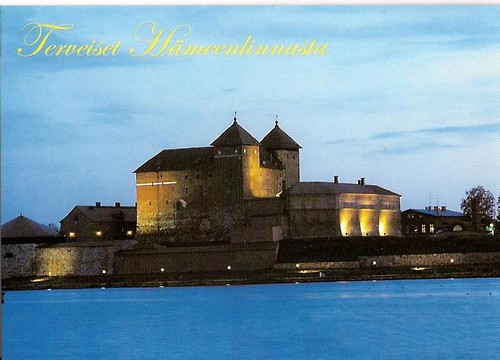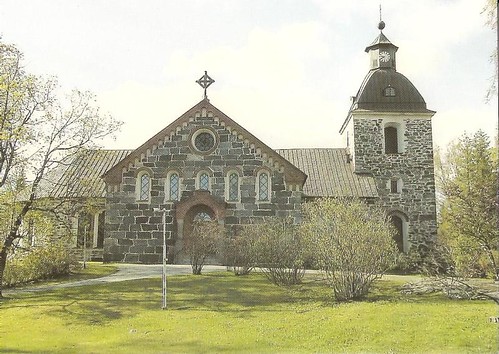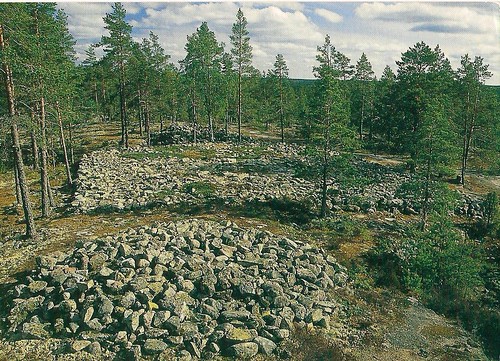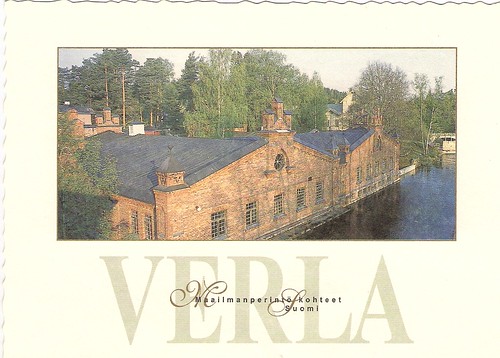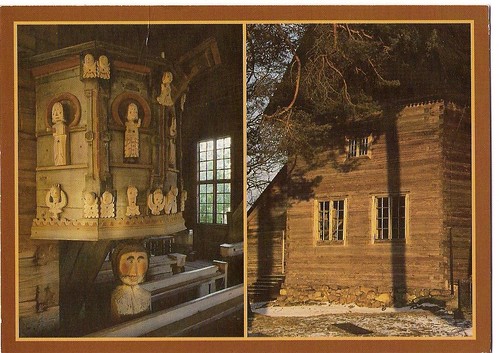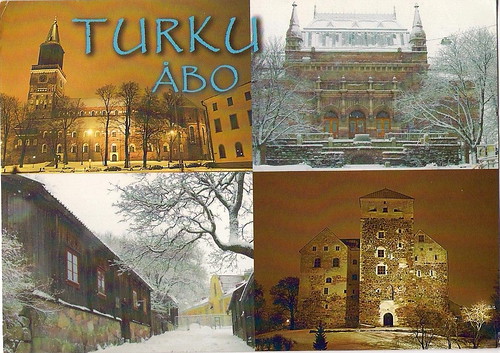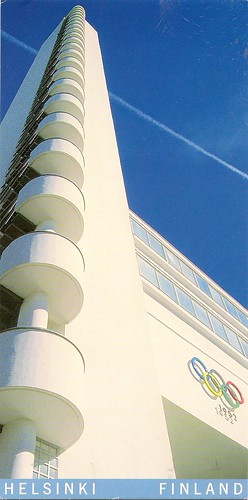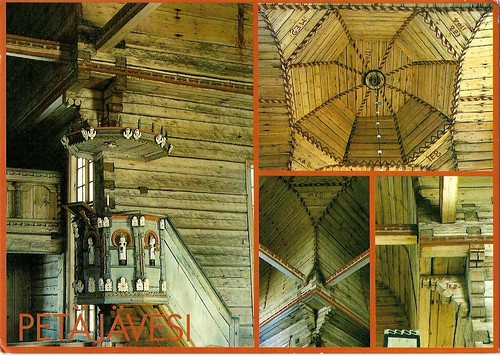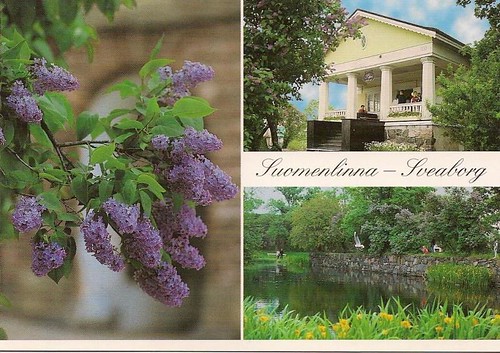Saturday, October 17, 2009
Helsinki Olympic Stadium, Finland
The Helsinki Olympic Stadium, located in the Töölö district about 2 kilometres (1.2 mi) from the center of the Finnish capital Helsinki, is the largest stadium in the country, nowadays mainly used for hosting sports events and big concerts. The stadium is best known for being the center of activities in the 1952 Summer Olympics. It was built however to host the 1940 Summer Olympics, which were moved from Tokyo to Helsinki before being cancelled due to World War II. The stadium was also the venue for the first World Athletics Championships in 1983 as well as for the 2005 World Championships in Athletics. It is also the home stadium of the Finland national football team.
Read more...Hamina, Finland
Hamina is a town and a municipality of Finland. It is located in the province of Southern Finland and is part of the Kymenlaakso region. Hamina is unilingually Finnish speaking. Hamina is also one of the most important harbours of Finland. The port specialises in forest products and transit cargo to Russia.
Read more...Helsinki Cathedral, Finland
Helsinki Cathedral is an Evangelical Lutheran cathedral of the Diocese of Helsinki, located in the centre of Helsinki, Finland. The church was originally built as a tribute to the Grand Duke, Nicholas I, the Tsar of Russia and until the independence of Finland in 1917, it was called St. Nicholas' Church.
Read more...Tuesday, August 25, 2009
Lahti, Finland
Lahti is a city and municipality in Finland.
It is the capital of the Päijänne Tavastia region located in the province of Southern Finland. It is situated on a bay at the southern end of lake Vesijärvi about 100 kilometres (60 mi) north-east of the capital Helsinki. In English, the Finnish word Lahti literally means bay and Vesijärvi means water lake.
The symbol of the city depicts a train wheel surrounded by sparkling flames.
Monday, August 10, 2009
Old Rauma, Finland
Old Rauma is the wooden city centre of the town of Rauma, Finland. It is listed as a Unesco world heritage site.
The area of Old Rauma is about 0.3 km², with approximately six hundred buildings (counting both proper houses and smaller buildings like sheds) and about 800 people living in the area. The town of Rauma expanded outside the Old Rauma proper only in the early 1800s. The oldest buildings date from the 18th century, as two fires of 1640 and 1682 destroyed the town. Most buildings are currently inhabited and owned by private individuals, although along the two main streets and around the town square they are mainly in business use.
Locations of special interest include the Kirsti house, which is a seaman's house from the 18th and 19th centuries, and the Marela house, which is a shipowner's house dating to the 18th century but with a 19th century facade, both of which are currently museums. Other sights include the rare stone buildings of the Old Rauma: the Church of the Holy Cross, an old Franciscan monastery church from the 15th century with medieval paintings and the old town hall from 1776. Another church in Rauma, the Church of the Holy Trinity, also from the 15th century, burned in the fire of 1640.
Wednesday, July 1, 2009
Moose, Finland
The moose (North America) or elk (Europe), Alces alces, is the largest extant species in the deer family. Moose are distinguished by the palmate antlers of the males; other members of the family have antlers with a "twig-like" configuration.
Read more...Heinola, Finland
Heinola is a town and a municipality located in the Province of Southern Finland. Heinola is perhaps best known for its summer activities such as the Sauna-sitting World Championships.
Read more...Verla at Jaala, Finland
Read more at another post : "http://abhishekpostcrossing.blogspot.com/2009/04/verla-at-jaala-finland.html"
Read more...Sunday, June 14, 2009
Häme Castle, Hämeenlinna, Finland
Häme Castle is a medieval castle in Hämeenlinna, Finland. The castle is located on the coast of lake Vanajavesi in the city center. The castle was originally located on an island.
Read more...The Evangelical Church, Kokemäki, Finland
Kokemäki (Swedish: Kumo) is a town and municipality of Finland.
Read more...Saturday, May 2, 2009
Sammallahdenmäki, Finland
Sammallahdenmäki is a Bronze age burial site in Finland in Lappi municipality. It was designated by UNESCO as a World Heritage Site in 1999, and includes 36 granite burial cairns dating back more than 3,000 years, to 1,500 to 500 BC. It is located on a hill in a remote area off the road between Tampere and Rauma. Originally, it was near the coast of the Gulf of Bothnia, but the land has risen so it is now 15 kilometers from the sea. It is one of the most important Bronze Age sites in Scandinavia.
Read more...Monday, April 6, 2009
Verla at Jaala, Finland
Verla at Jaala, Finland, is a well preserved 19th century mill village and a UNESCO World Heritage Site since 1996. The first groundwood mill at Verla was founded in 1872 by Hugo Nauman but was destroyed by fire in 1876. A larger groundwood and board mill, founded in 1882 by Gottlieb Kreidl and Louis Haenel, continued to operate until 1964.
Read more...Wednesday, April 1, 2009
Turku Castle, Finland
The Turku Castle, is a monument of Finnish history situated in the city of Turku in Finland. Together with the Cathedral of Turku, Turku castle is one of the oldest buildings still in use in Finland. Turku castle is the largest surviving medieval building in Finland, and one of the largest surviving medieval castles in Scandinavia. This national monument standing on the banks of Aura river has experienced many stages for more than 700 years.
Read more...Saturday, March 7, 2009
FI-490470, Helsinki Olympic Stadium, Finland
The Helsinki Olympic Stadium, located in the Töölö district about 2 km from the center of the Finnish capital Helsinki, is the largest stadium in the country, nowadays mainly used for hosting sports events and big concerts. The stadium is best known for being the center of activities in the 1952 Summer Olympics. It was built however to host the 1940 Summer Olympics, which were moved from Tokyo to Helsinki before being cancelled due to World War II. The stadium was also the venue for the first World Athletics Championships in 1983 as well as for the 2005 World Championships in Athletics. It is also the home stadium of the Finland national football team.
Read more...Wednesday, February 25, 2009
FI-475769, Petajavesi Church, Finland
The old church at Petäjävesi was built in 1763-1764 to act as a village church in the parish of Jämsä; the dedication did not, however, take place until 1778. In 1779 Petäjävesi was made a subordinate parish and in 1867 an independent parish. In 1879 a new church was built for the parish but the old church was not abandoned.
UNESCO considered it to be a representative Lutheran church of the Scandinavian tradition, mixing Renaissance with older Gothic elements.
Wednesday, February 11, 2009
Fortress of Suomenlinna, Finland
Suomenlinna, until 1918 Viapori, (Finnish), or Sveaborg (Swedish), is an inhabited sea fortress built on six islands (Kustaanmiekka, Susisaari, Iso-Mustasaari, Pikku-Mustasaari, Länsi-Mustasaari and Långören), and which is nowadays part of Helsinki, the capital of Finland.
Suomenlinna is a UNESCO World Heritage site and popular with both tourists and locals, who enjoy it as a picturesque picnic site. Originally named Sveaborg (Fortress of Svea), or Viapori as called by Finns, it was renamed Suomenlinna (Castle of Finland) in 1918 for patriotic and nationalist reasons, though it is still also known by its original name.
Sweden started building the fortress in 1748 as a protection against Russian expansionism. The general responsibility for the fortification work was given to Augustin Ehrensvärd. The original plan of the bastion fortress was strongly influenced by the precepts of Vauban, the foremost military engineer of the time, and the principles of Star Fort style of fortification, albeit adapted to a group of islands.
In addition to the island fortress itself, seafacing fortifications on the mainland would ensure that an enemy would not acquire a beach-head from which to stage attacks. The plan was also to stock munitions for the whole Finnish contingent of the Swedish Army and Royal Swedish Navy there. In the Finnish War the fortress surrendered to Russia on May 3 1808, paving the way for the occupation of Finland by Russian forces in 1809. Read more...
Saturday, February 7, 2009
Friday, January 30, 2009
Petäjävesi Old Church, Finland
The wooden church of Petäjävesi was built between 1763 and 1765. UNESCO considered it to be a representative Lutheran church of the Scandinavian tradition, mixing Renaissance with older Gothic elements.
Read more...


